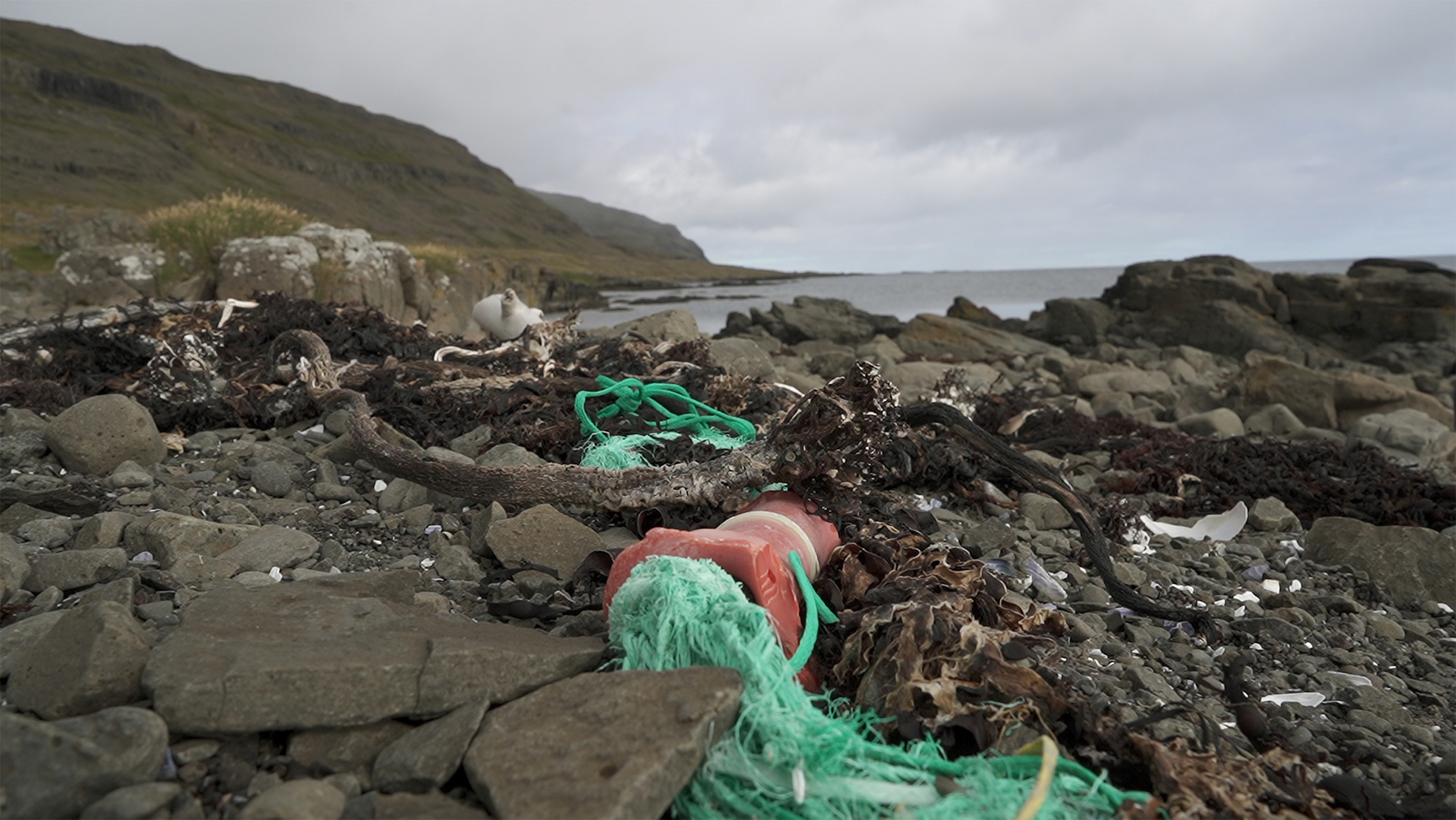The sea remembers everything: Can we solve the plastic crisis?
Like driftwood, all things that are floating tell a story and these stories connect us across the ocean and across the globe.
– Catherine Chambers, University Centre of the Westfjords –
Although plastics are only about one-hundred years old and weren’t manufactured in large quantities until after the Second World War, they have since witnessed a global surge. More than 8 billion tons of plastics have been produced worldwide to date – more than 1 ton per person alive on planet Earth today. The majority of plastic waste is not recycled but either incinerated or ends up in the environment, causing a myriad of environmental and health hazards.
Eighty percent of the world’s ocean plastics come from land-based, twenty percent from marine sources. Currently, 150 million tons of plastic waste circulate our marine environments, transported by currents, wind and the atmosphere. Every year, another 10 million tons enter the oceans. By 2050, there will be more plastic in the oceans than fish. Sea ice as well as the sea floor are major final repositories for microplastics – plastic particles that have degraded to less than 5mm. Animals get entangled in floating plastic, causing injuries and suffocation. They also mistake plastic for food and can starve to death on a full stomach. In Iceland, eighty percent of the fulmars carry plastics in their stomachs. Floating plastic also increases the risk of spreading invasive species. Although the population density in the Arctic is low, habitats contain as much plastic waste as densely populated areas. The amount of litter in the deep sea of the Arctic Ocean has even risen twenty-fold within a decade. And climate change will worsen the problem – with melting sea ice, human activities like shipping will increase in the region.

The majority of the plastic that washes ashore in Iceland is related to the fishing industry – including large trawl nets, ropes, floats and buoys. Other common finds on the beaches include bottles, caps, lids and shotgun shells from seabird hunting. Six beaches in Iceland – Rekavík bak Höfn in Hornstrandir and Vogur in the North of the Skagi peninsula amongst them – are part of an OSPAR project monitoring litter on over seventy beaches in the North-East Atlantic. Their research helps determine the magnitude, composition, origin and age of beach litter. And every summer, various volunteer organizations coordinate beach-clean ups across Iceland’s extensive coastline that roughly stretches 5,000 kilometers. The amount of plastic that washes ashore keeps increasing every year – although it is prohibited by law to abandon lost fishing gear at sea, the recovery rate of fishing nets is close to ninety percent and the recycling rate has increased to seventy percent. Bad weather conditions and gear conflicts are most likely the main reasons that fisheries still lose their equipment.
Key to the protection of the Arctic environment is to prevent plastic waste in the first place. In 2021, the Arctic Council under Icelandic Chairmanship published a regional action plan to reduce both land- and sea-based marine litter. The plan tackles key sources like fisheries and aquaculture, ships and offshore structures as well as onshore waste and wastewater management. Proposed solutions include the use of sustainable materials, beach clean ups, stronger monitoring, research and a further increase of public awareness. Actions will need to be taken by the Arctic states collectively and individually. But plastic pollution is also a global problem calling for a global solution – and momentum for a binding global treaty has been building up for the past years, now backed by 120 countries. Negotiations are expected to start next year, however, economic interests from big corporations and states could hinder an effective agreement.
